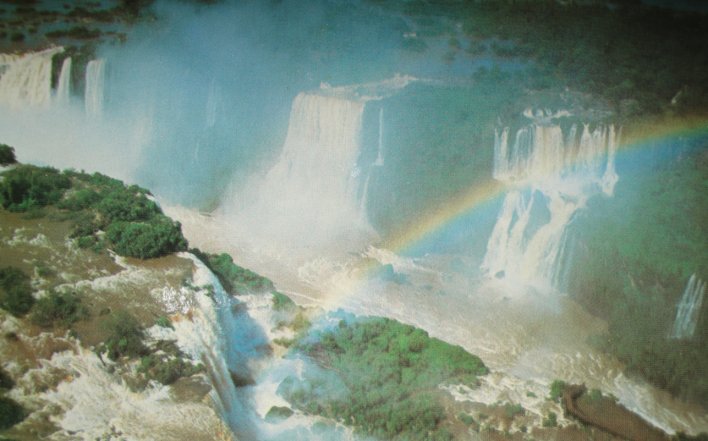
Brazilian television had a report about their parks and how they are poorly maintained. It was a good PR for the U.S. The headline says “[Brazilian] parks are abandoned.” The subhead makes the comparison that “Preservation of the national heritage in the USA is a tradition that goes back to the 18th Century.” They praised our park system and said that it would be good if the Brazilian parks became more like ours.
The American National Park system is the oldest and the best in the world. We sometimes take our parks and national forests for granted until we think about it or compare it with others.
One of my goals when I get to Brazil is to visit their national parks. I have already been to three of them: Iguacu falls, Aparados da Serra & Lagoa do Peixe. But that was before I took decent pictures or wrote up my experience. Anyway, there are thirty-two national parks in Brazil. That shouldn’t be impossible to see all of them in three years, but some are very remote. (I have to admit that I have not visited all, or even most, of our parks in America. Of course, we have more of them. That may be something to do when I retire. You can even get a special old folks’ pass.)
I think that I may perform a useful service if I visit Brazilian parks and do a reasonably good job of documenting the visit. There just is not a lot of good information available about some of them, especially in English. A big problem for the Brazilian parks is money. They evidently have a kind of moral dilemma about charging for admission and letting private profit-making firms have concessions within the parks. Some people think this is a task government should do. But, since it is clear that the government cannot or will not support the maintenance of the parks and the infrastructure to support visitors, Brazilians are looking for other models. Despite the fact that we also complain about lack of money, the American mixed system works.
One of the persons interviewed said that the only thing worse than charging admission and letting private concessions make money at the parks is not doing that and letting the parks decay and go unused by the people. The Brazilian model for making the parks work is the Foz da Iguacu. This is one of the biggest waterfall in the world (maybe the biggest, depending on how you measure), so it starts off with many advantages for attracting tourists. (You can see how pretty it is from the picture up top) At this park they charge admission and have granted concessions to hotels, helicopter tour operators etc. As a result, it is a nice place to visit and a model for others.
Chrissy & I visited the falls back in 1987. As I recall, the infrastructure was okay, but not great. Like so many other things in Brazil, it seems that they really have come a long way. My memory of the time is hazy. I wasn’t there very long. I was coming down from Brasilia and got stuck in Curitiba airport for a long time, so Chrissy got there first and saw more of the place. I remember best a little trivia. More water flows over these falls than over any other in the world, but it is not really one falls, more a series. The year-around warm weather, wet conditions and constant spray makes the area around the falls is a paradise for frogs. But the swift water isolates frog populations on islands and peninsulas, so that many species and sub-species have developed. If you are interested in frogs, this is the place to be. For the herpetologist the impressive waterfalls are just a bonus.
